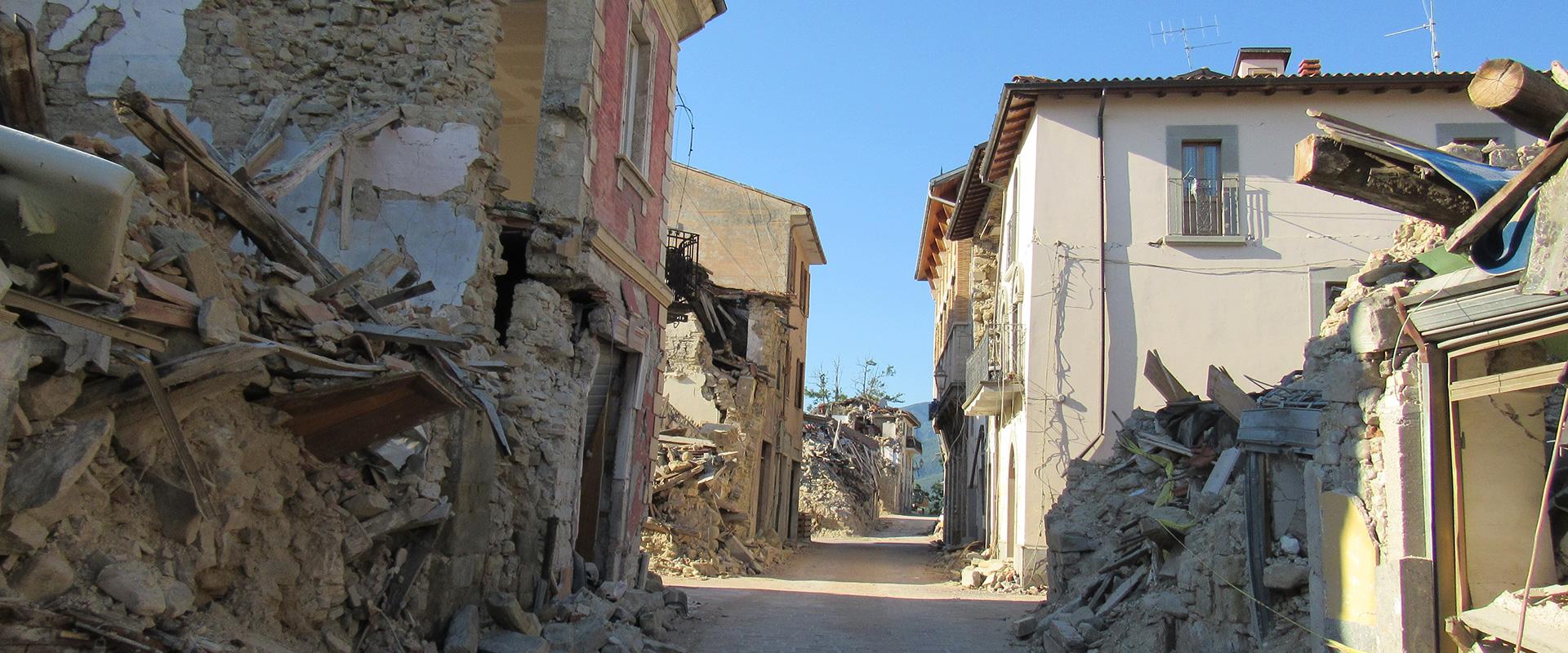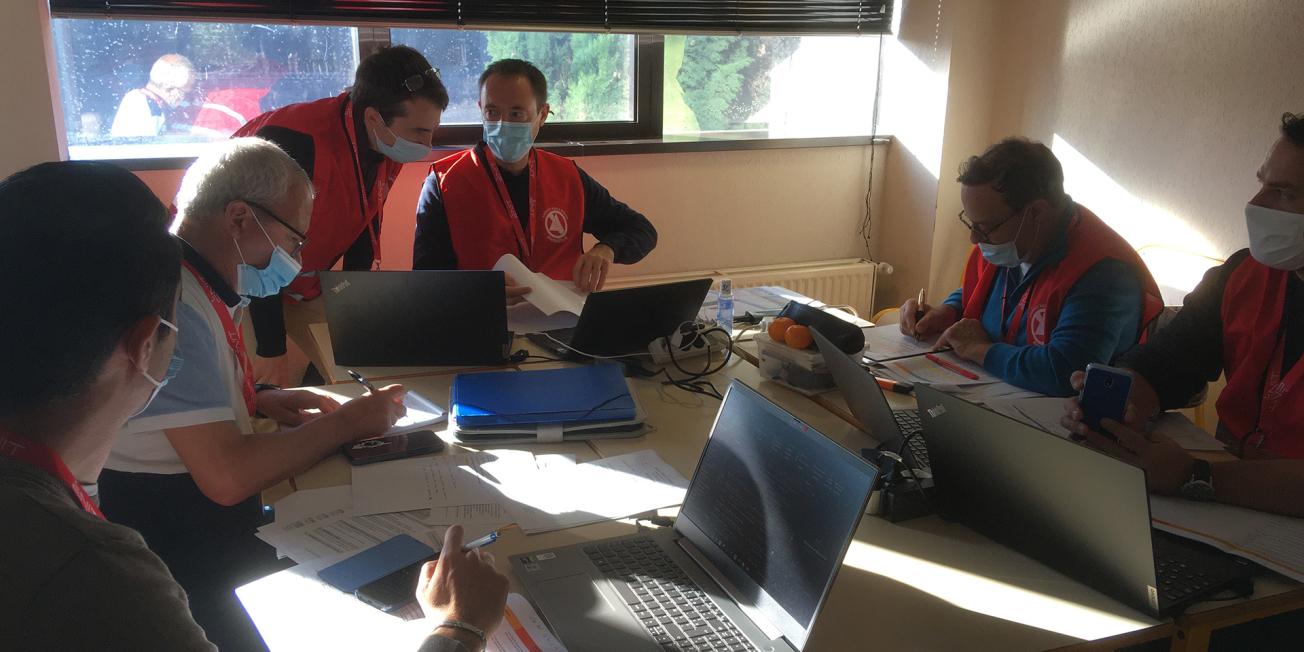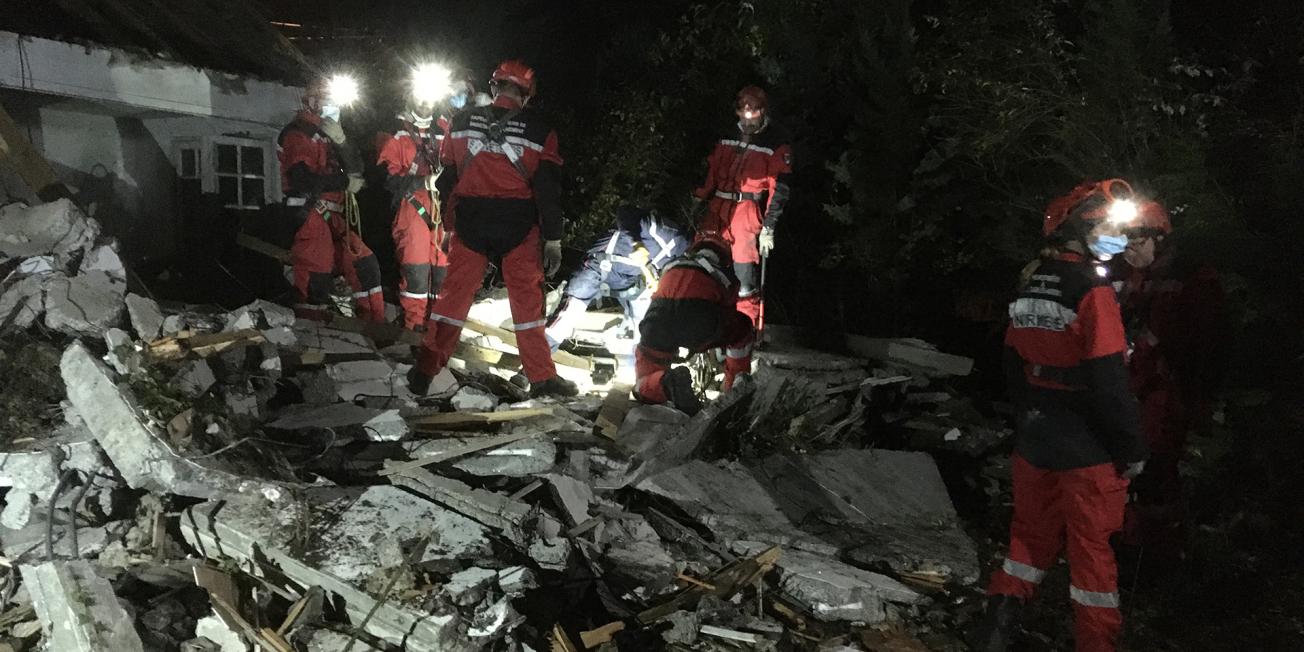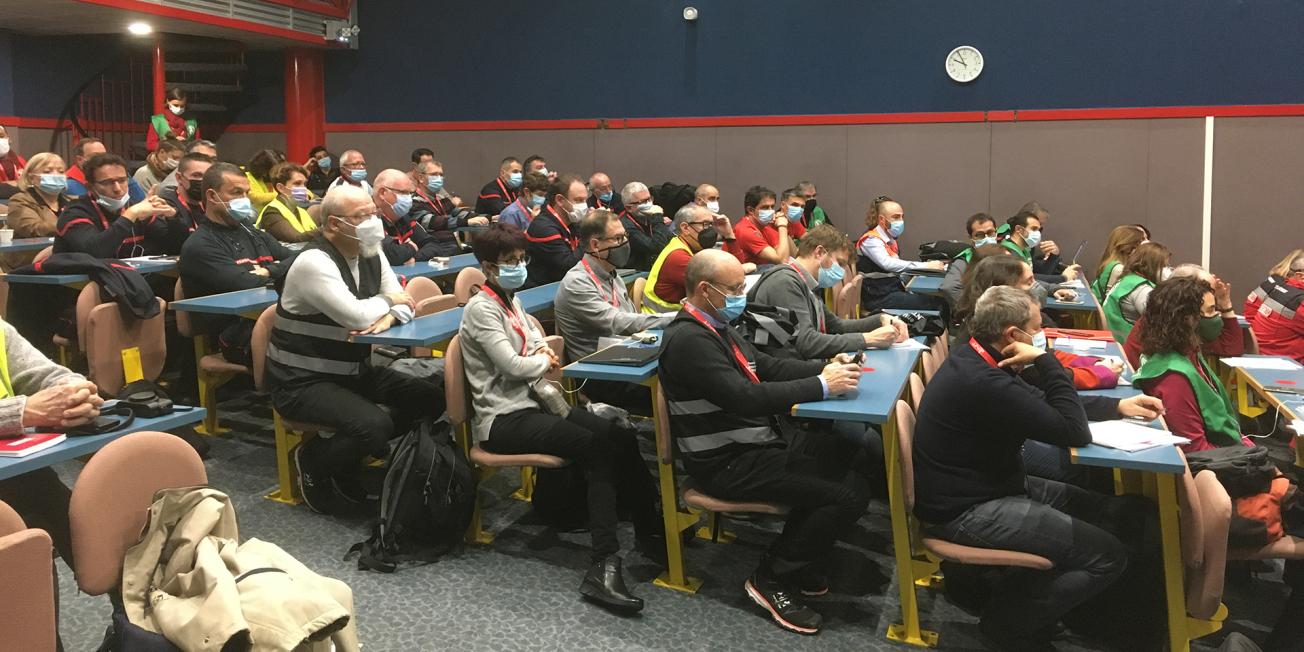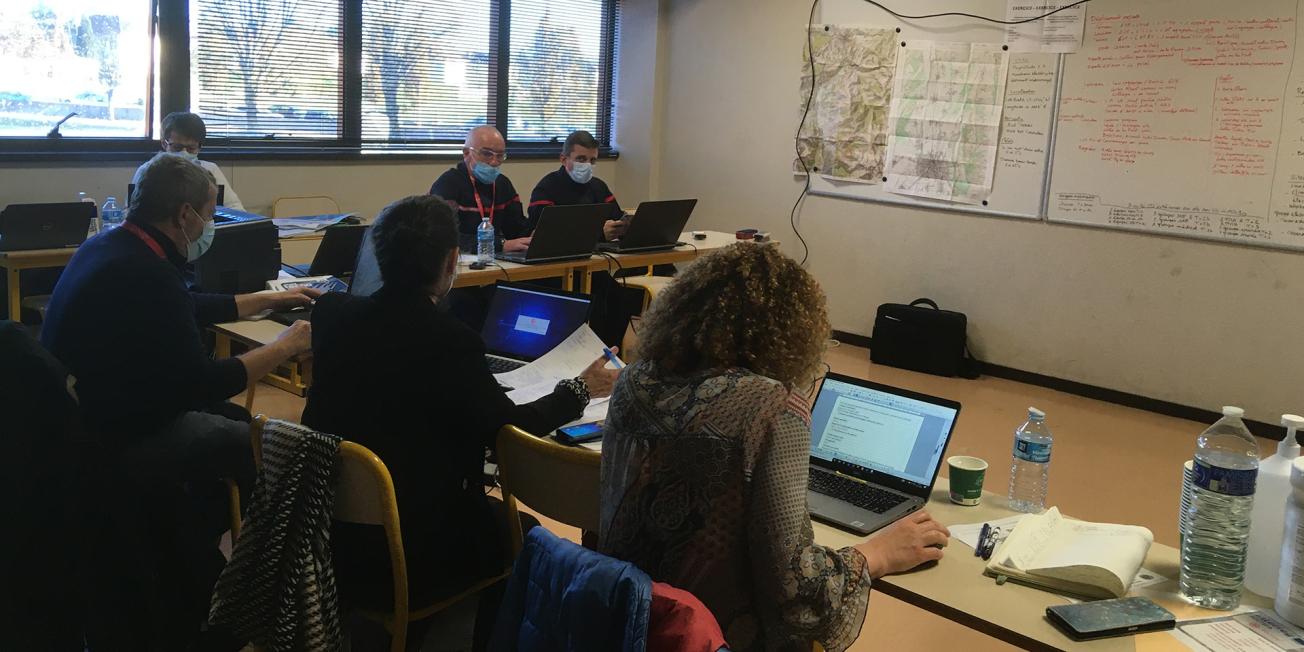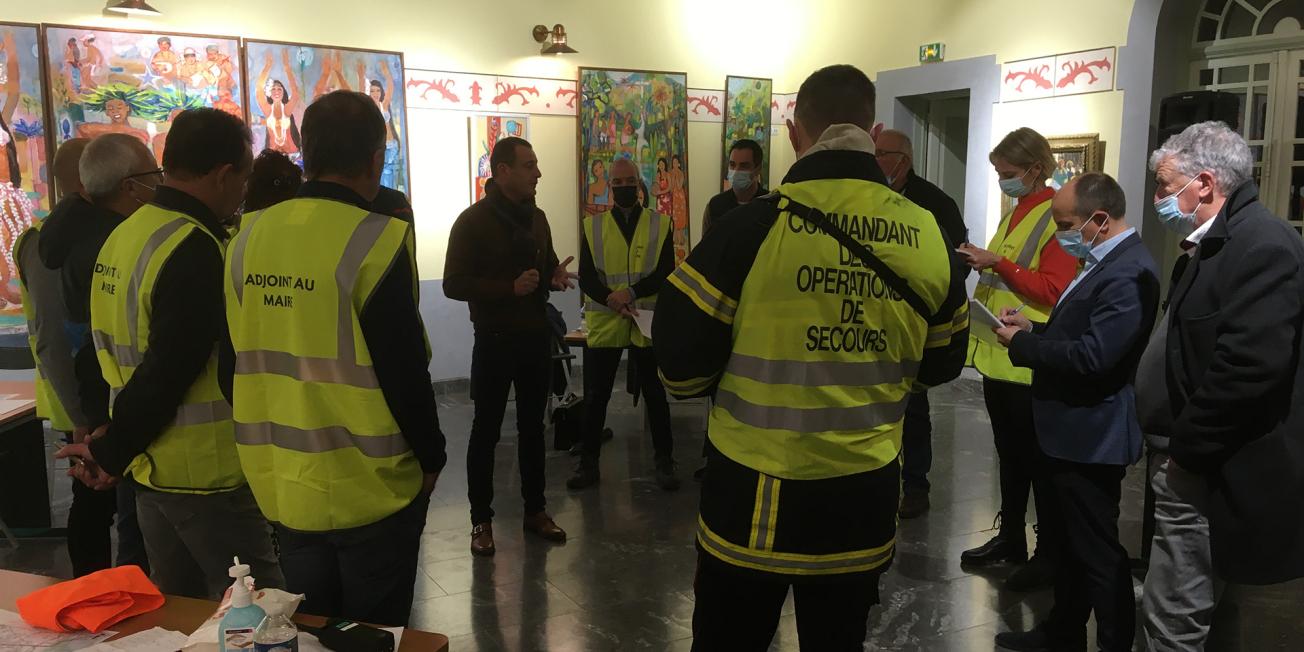Feedback on the POCRISC crisis exercise
Transcription
POCRISC: for a common culture of seismic risk Seismic Exercise
Samuel Auclair, seismologist at BRGM and coordinator of the POCRISC exercise, which, at the end of the project, enabled us to test everything developed over four years to improve earthquake disaster management. During this exercise, we were able to test in a realistic environment, mobilizing a great many French, Spanish and Andorran partners, the contribution of these developments to crisis management.
I am Rosa Mata Frances. I am the head of operations and logistics at the Civil Protection General Directorate of Catalonia. I am in charge of coordinating the participation of Catalonia's Civil Protection in this project. We worked on two main areas. Firstly, building damage assessment. We helped to develop a questionnaire that enables different technicians on the ground to inventory post-seismic damage to buildings in a homogeneous manner, by all using the same method. In particular, we helped to design an application which collects this data without the need for paperwork.
We represent an association called ACE that wants to carry out the same work as the association AFPS in France. AFPS is the French Association for Earthquake Engineering. It provides assistance through the assessment of post-earthquake damage. We helped to develop manuals. Manuals for the assessment of the seismic vulnerability of buildings, of potential damage according to building type: old brick buildings, concrete structures, metal structures and so on. We estimate potential damage according to structure type. Among these manuals, which are an important part of the POCRISC project, there are manuals, for example, on how to equip buildings in order to evaluate their dynamic behaviour, how they react to earthquakes or how to reinforce them so they withstand earthquakes.
We tried to create an application which we developed in the framework of this project. It collects the data recorded by different technicians, in a centralised, homogeneous format so that it can be sent, processed and analysed in an emergency coordination centre.
We are here to see how this works with Deveryware, in order to analyse buildings, the vulnerability of their structures and to obtain information in the event of an earthquake. To have this information first hand and rapidly. The team is highly organized. It spans different municipalities. It is very important for us to see this relationship as well as the different units working on buildings. The building analysis unit is very coordinated. And the application developed by POCRISC will help us to manage crisis situations and obtain information. Those carrying out assessments will be able to communicate much more effectively. This will help us to plan and better manage crises.
Another important initiative developed by the project is the simulation exercise. Following an earthquake, a rapid estimate of damage gives disaster management teams an idea of what may have happened. This is then verified on the ground.
Today, we spent the day on a large-scale earthquake exercise. It required a fair amount of preparation. On the two different sites, there were 80 firemen who worked for five hours non-stop to retrieve 20 people trapped under rubble. Of course, they were not real victims. This exercise, like all the others, is important because we will be more efficient if we train. This exercise was different as it was on a large scale. It followed a fictitious event of great magnitude. It was a continuation of what we'd witnessed earlier. We worked with our colleagues from SDIS64 and those from Andorra, which is quite rare. We discovered new tools which can but improve our methods and victim response. It's our purpose and the project's purpose.
This exercise was very interesting. We saw how to organise ourselves. We saw the strengths and the weaknesses. What we have seen today enables us to structure and improve our operational plan.
We were able to both test the tools that we had developed during the project and also get to know the other participants, exchange opinions and experiences concerning our work and learn from each other.
The feedback from this exercise will enable us to not only improve the tools used in this project but also our response in the event of earthquakes in the Pyrenees.
The objective of the full-scale seismic exercise coordinated by BRGM on 19 November 2021 around Tarbes (Hautes-Pyrénées) was to simulate an earthquake of magnitude 5.9 and test the area’s crisis management resources.
Every year hundreds of tremors are recorded in the Pyrenees, but fortunately most of them are imperceptible to people and cause no damage. In the past, very destructive earthquakes have occurred in the massif, which led to regulatory seismic zoning to classify the seismic risk as moderate to medium (the highest level observed in mainland France). In this context, the POCRISC project, financed by the European POCTEFA fund and of which BRGM is a partner, is interested in promoting a common culture for managing seismic risk in the Pyrenees, by:
- developing shared approaches to risk evaluation for all prevention teams;
- helping disseminate information to all the local authorities concerned and the general public;
- providing decision-making tools tailored to the needs of emergency management teams.
An earthquake simulation exercise in the Hautes-Pyrénées, 19 November 2021
More than 200 people mobilised from France, Spain and Andorra
The aim of the seismic exercise was to test, under realistic conditions, the contribution to crisis management of the tools and methodologies developed by the partners of the POCRISC project over the last 3 years. These tools aim to:
- rapidly estimate the effects of earthquakes,
- understand and monitor aftershocks,
- enable emergency building-damage assessment.
The exercise included both "tabletop" actions, played at the National Engineering School (ENIT) in Tarbes with the Hautes-Pyrénées Prefecture, and actions in the field:
- mixed teams, made up of French, Spanish and Andorran firefighters, and experts from the French Association of Earthquake Engineering (AFPS) and its Catalan counterpart (ACE), simulated the conduct of emergency building-damage assessment;
- French rescue and rubble-clearing units (USAR) from the Hautes-Pyrénées and Pyrénées-Atlantiques, supported by Andorran reinforcements, carried out search and rescue operations on a former industrial site;
- the municipality of Séméac tested the triggering of its Plan Communal de Sauvegarde (PCS) for the first time.
In all, this crisis management preparedness exercise mobilised over 200 people from France, Spain and Andorra.
The exercise was preceded, on 18 November 2021, by an evening conference for elected officials in the Hautes-Pyrénées, which included a presentation by the Director General of Services of the town of Le Teil, in the Ardèche, which had been affected on 11 November 2019 by a violent earthquake.
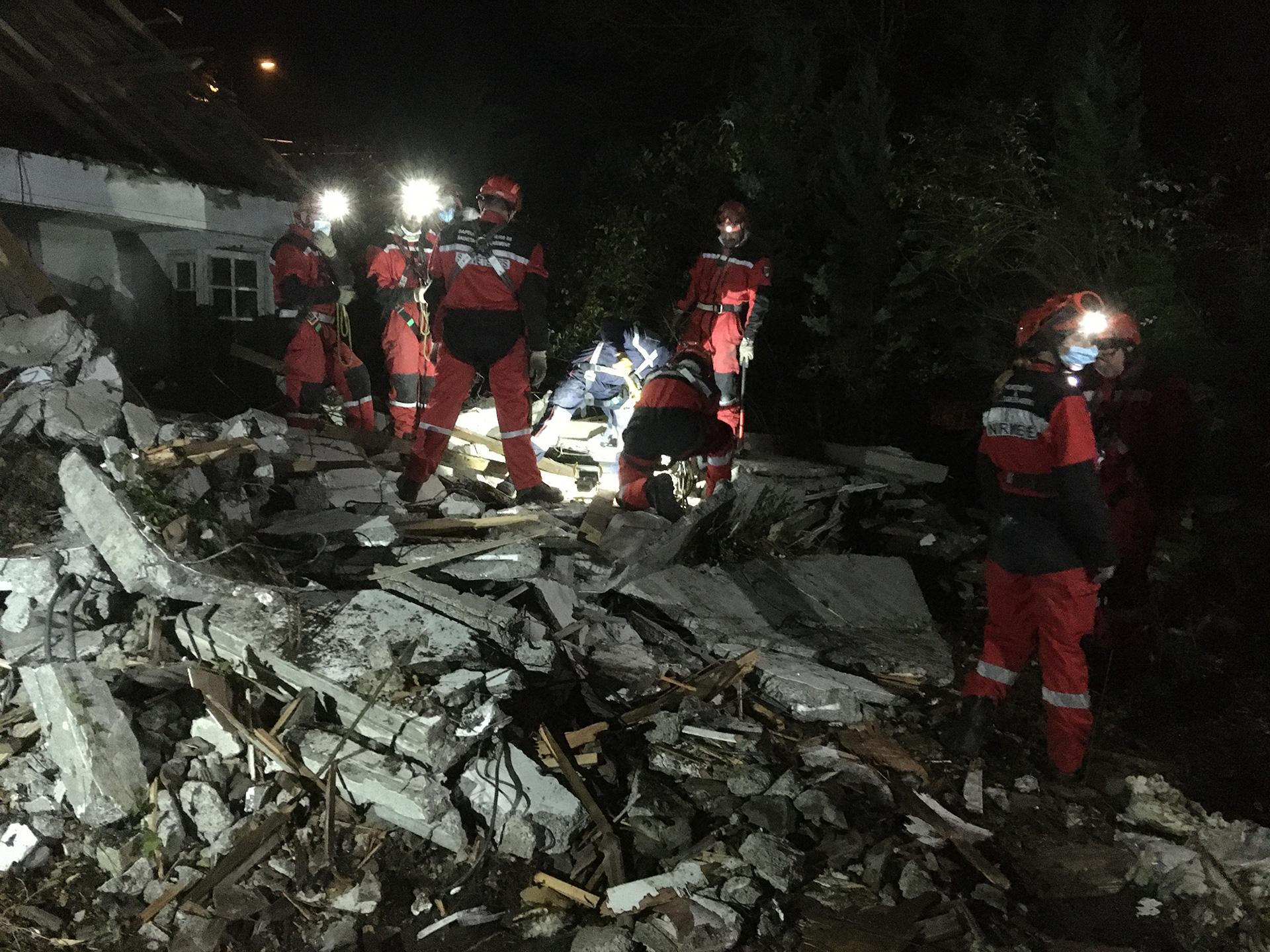
Our Plan Communal de Sauvegarde had previously been a risk management tool to deal with random events. The risk of earthquakes was not paid any particular attention until the plan was implemented to respond to this event under actual conditions. It has now become a tool that everyone can use.

